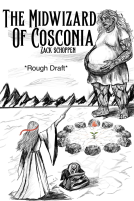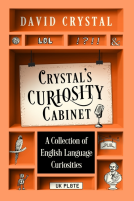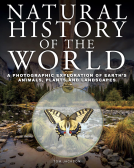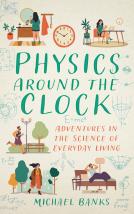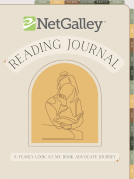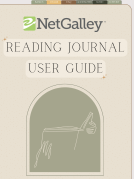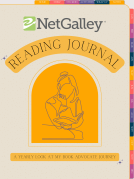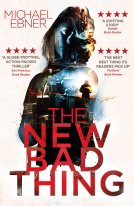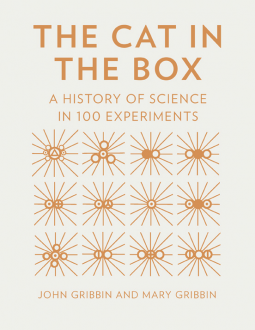
The Cat in the Box
A History of Science in 100 Experiments
by John Gribbin; Mary Gribbin
This title was previously available on NetGalley and is now archived.
Send NetGalley books directly to your Kindle or Kindle app
1
To read on a Kindle or Kindle app, please add kindle@netgalley.com as an approved email address to receive files in your Amazon account. Click here for step-by-step instructions.
2
Also find your Kindle email address within your Amazon account, and enter it here.
Pub Date 1 Sep 2017 | Archive Date 4 Jan 2018
Quarto Publishing Group – Race Point Publishing | Race Point Publishing
Talking about this book? Use #TheCatInTheBox #NetGalley. More hashtag tips!
Description
All science is based on curiosity, hypothesis, experimentation, and analysis. This basic formula has been in place for thousands of years, and has led to some of humankind's greatest achievements. From modern feats like cracking the human genome and using gravitational waves to detect a new kind of nova, to harnessing the power of rivers to power mills, it leads back to initial kernels of curiosity and testing.
Renowned science writing duo, John and Mary Gribbin, retell the enlightening, fascinating, and often oddball stories of scientific innovation through the ages in their new book, The Cat in the Box. The tradition of curiosity, experimentation, analysis is rarely a straight road, and you will not believe some of the incredible stories the Gribbins' pull from labs and workshops from around the world.
Available Editions
| EDITION | Other Format |
| ISBN | 9781631064159 |
| PRICE | US$28.00 (USD) |
| PAGES | 288 |
Average rating from 20 members
Featured Reviews
 Reviewer 446033
Reviewer 446033
From micro to macro universe, this book provide good explanation of the most popular scientific theories. This is a good book for high school libraries, public libraries and university’s libraries.
A cool idea for a book. Lots of great information here with some nice illustrations.
So, this book.
In places I was not prepared, the pictures in this book are a fantastic accompaniment and they really show you for example when discussing diseases what those diseases look like, so if you’re queasy, be mindful of that.
However this books is really good at concisely giving you an idea of what happened and the impact the experiments had on Science. Informative and smartly done, this book isn’t heavy so it’s a really good read for someone just peaking their interest - this is the perfect starter book for an (older) budding scientist.
The information is given in a really simple, understandable way and combined with the pictures, it really makes for an informative and interesting read from the beginning.
This book is divided into 100 short chapters, each illustrating and explaining an important scientific discovery and, to a lesser degree, the scientists associated with them. It's very well illustrated with many photographs and diagrams of the experiments (and much of the equipment used). Written in an open informal style, the language is accessible to the average interested reader. The experiments and discoveries are listed in roughly chronological order, starting with Archimedes in 200something B.C. and ending with a short study in cosmology which could (literally) be taken out of today's headlines.
I could definitely see this book being used as support material in a classroom setting for middle grades up to college age, or simply enjoyed as an information filled read. It would be a good resource book for libraries as well.
One of the things that especially appealed to me about this book is that it covers a lot of 'meaty' scientific history and manages to do so without requiring an unreasonable or intimidating amount of math/physics background from the reader. People who swear they don't enjoy mathematics will find plenty to enjoy in this book. Since it covers a broad range of subjects, from genetics to particle physics to biology and cosmology, there's a lot for other disciplines to read and learn about also.
In addition to the 100 experiments, there's an afterword (props for all the Feynman quotes), followed by a really useful index and bibliography/picture credit section. Plenty of scope for further reading.
Critical thinking and reasoning ability are more important now than ever. Every day we're inundated with media bombardment purporting to tell the truth. It's absolutely vital to know what to believe and to be reasonably adept at winnowing out the truth from fiction. Scientific reasoning is a method of training ourselves to be more adept at figuring out what to swallow.
Stats:
Author: John Gribbin, Mary Gribbin
288 pages, Hardback
Released Sept 1, 2017 from Quarto Publishing Group - Race Point
Four stars for content and accessibility. Great fun!
 Floyd J, Reviewer
Floyd J, Reviewer
Originally published in the UK in 2016, The Cat in the Box has now made its way to the USA with a 2017 publication date. The book is a fun history of science, focused, not on the people of science or the discoveries, but on how the scientific method and the experiments that used this method moved the various disciplines forward.
The author begins by giving a simple definition of the scientific method:
… science is nothing without experiments. As the Nobel Prize-winning physicist
Richard Feynman said, “In general, we look for a new law by the following
process: First we guess it; then we compute the consequences of the guess to see what would be implied if this law that we guessed is right; then we compare the result of the computation to nature, with experiment or experience [observation of the world], compare it directly with observation, to see if it works. If it disagrees with experiment, it is wrong. In that simple statement is the key to
science. It does not make any difference how beautiful your guess is, it does not
make any difference how smart you are, who made the guess, or what his name
is—if it disagrees with experiment, it is wrong .” [Richard Feynman, The Key to Science, Lecture at Cornell University, 1964 (www.youtube.com/watch?v=b240PGCMwV0)]
Those words—if it disagrees with experiment, it is wrong—provide the simplest
summary of what science is all about.
Beginning with that definition, we begin to look at the various ways the physical and biological sciences have used the scientific method to reach the current state of knowledge.
The first experiment discussed is from the 3rd century BCE with Archimedes discovery that equal volumes displace equal volumes of water. Tradition tells us he made the initial hypothesis by watching the water displaced as he sat into his own bath - followed by experiments that proved the hypothesis correct.
The most recent rendition of the book includes a 101st experiment, carried out in 2015 and published in 2016, establishing the gravitational waves spreading out through the universe.
Between those two events, we meet a variety of men and women who made significant contributions to science through their experiments. The author also does a careful job of showing how on scientist discovery provided the foundations for the next generation’s hypotheses. Included are many references to the original publication sources where the experiments are described. Though the 101 experiments are presented in chronological order, in-text notes point to earlier and later work that connect to the current story. As the author concludes,
This astonishing experimental result [the proof of gravitational waves] was the culmination of more than two thousand years of experimental science. And it all began with another kind of wave—ripples in the bathtub of a Greek philosopher called Archimedes.
The book, though not based on mathematics, is written for a high school graduate or college student. The text is not hard reading - experiments are well explained. The book would have a place in a lower division general science course or an upper division or graduate level history of science course. Though not every experiment could be safely duplicated in the context of a college semester, many of them could be chosen for demonstration or as student projects (perhaps with some simple modification).
______________
This review is based on a free electronic copy provided by the publisher for the purpose of creating this review. The opinions are mine alone.
Great look at experimental science from its beginning
I had recently read “Out Of The Shadow Of A Giant” by John Gribbin and Mary Gribbin and loved it so I was optimistic that this book would be as good. I was not disappointed. I liked this book because the information was tangible; no theoretical physics here, just descriptions of important experiments and their implications. It is a fun read, with lots of beautiful photos and illustrations. I recommend this book for anyone interested in the history of science.
Disclosure: I received a complimentary copy of this book via Netgalley for review purposes.
Fascinating, With Surprising Depth and Range
Here's the thing. There are lots of books that survey interesting experiments, great moments in science, and so on. They can be fun, but many of them are a little vague, or shallow, or careless about details. They may hit the highlights, but often feel like sciencey bathroom books. That's often just fine, but it's not what you get here.
In this book you get a basic intro and outline of a famous experiment, but then you take the next step and look at the science, the experimenter, the experimental method, and the context in more detail and often with a second deeper level of understanding. Here's an example. Everyone knows Archimedes' experiment. A pound of gold, being denser, will displace less water than a pound of some adulterated mixture of gold and a lighter metal. Eureka! Archimedes determined that the king's crown had been made not from a single bar of gold but from a cheaper mixture of gold and silver. The book explains this. But I've always wondered how Archimedes measured with necessary precision the water displacement. Well, the book goes on to explain this too. He didn't measure the water volumes. He put a bar of gold on one side of a balance beam and the crown on the other side of the balance. When immersed in water the adulterated crown was more buoyant, because it displaced more water, and the beam tipped the gold bar down. Eureka, indeed! And so the hydrostatic balance is born. That's what I mean by going the extra mile to illustrate and explain the scientific principle, (here, Archimedes' principle), and the experimental method, at issue.
The book is loaded with goodies like this. Apart from taking away a deep appreciation of what amateur Enlightenment era scientists accomplished, (and being rather astonished at how often Benjamin Franklin shows up in the middle of or at least at the edge of these stories), you'll learn a tremendous amount about a wide range of scientific breakthroughs you thought you already knew.
The organization of the 100 experiments is chronological, but of course science moved in fits and starts and developments and discoveries are often clustered together. In general, we address Newtonian physics, the early days of chemistry, phlogiston, electricity, heat, light, magnetism, natural science, gravity, solar system objects, steam power, medicine, radio, DNA and genetics, and, in later sections, so much that's going on in cosmology and particle and quantum physics. It's quite a ride.
Each chapter is devoted to a single experiment, although that is set in its larger context. Descriptions are crisp and clear. Illustrations are either helpful, (diagrams and cross-sections, photos and engravings of lab equipment, and the like), or at least set the right mood, (Archimedes in his bath). The narrative tone is welcoming and earnest, but is rather neutral, and not written to be funny or chummy or especially personable. In that regard this reads more like an accessible bite-size textbook than a celebrity-scientist lecture. That was fine by me because the appeal here is the science, not the musings of a science personality.
All in all, this was one of the most engaging and informative popular science books I've read in some time. It will lead to deeper understanding of principles with which you may be familiar, and will most likely introduce some new and intriguing bits to round out your science education. A very nice find.
(Please note that I received a free advance will-self-destruct-in-x-days Adobe Digital copy of this book without a review requirement, or any influence regarding review content should I choose to post a review. Apart from that I have no connection at all to either the author or the publisher of this book.)
 Jeff F, Media/Journalist
Jeff F, Media/Journalist
You can’t finish this book without being smarter (although I must admit some of it sailed over my head!)
 Andrew J, Reviewer
Andrew J, Reviewer
I found this progressive history of scientific discoveries and the people who were curious enough to ask why, how, and even why not to be fascinating. Not a scientist myself but having an inquisitive nature this book worked to satisfy my innate desire to know. Limited to only 100 experiments it is not an exhaustive list of ground breaking discoveries. I’m sure you could list the top 200 - 250 or more and still get those who would say, “What about this experiment or that scientist.” When we ask questions and then seek answers it opens up your mind to possibilities and thoughts of what if.
The Gribbins have done their research and written concise and understandable synopsis of each experiment, the scientist(s) involved, and the importance of each discovery. There is forward and reverse entries connecting past discoveries or scientist to new incites. The ebook version I read didn’t make this easy but a written book or an e-volume that allowed for clickable links would make this even more fascinating.
I would say that I wish it had more depth but then the book would have been unwieldy and defeated the purpose of an overview. It is one I will hold onto in order to do my own research on those experiments and scientist that intrigued me the most.
For anyone seeking knowledge, to those who want more in-depth understanding of the scientific method, this is a good starting point.
I wish to thank Race Point Publishing, The Gribbins, and NetGalley for my free, very enjoyed copy in exchange for this review.
Great overview of important scientific events that help people like me, who are not well versed in scientific things, to understand how these important things happened, and what they mean in terms of impact.
 Librarian 299542
Librarian 299542
I loved his microhistory-esque book and the scientific ideas and principles included in this book which touches upon various scientific disciplines.
 Ron G, Reviewer
Ron G, Reviewer
The Cat in the Box is a compilation of 100 important science experiments ranging from Archimedes in the 3rd century bc through an experiment conducted in 2015. It's a great history of science!
The nice thing about this book is the authors masterfully condense these experiments into brief explanations of not only why the experiment was done but also how, along with telling why the experiment is important. Most experiments are documented within three pages so it's easy to read and understand a few experiments in a short time.
As the book progressed, I have to admit that some of the experiments were a little over my head. This was not because of poor explanations. The writing was made as understandable as possible.
All in all, a fun read!
 Beth B, Reviewer
Beth B, Reviewer
This book was awesome. I want to understand science but my brain doesn't seem to work that way, and I have to work really hard at making sense of things. The Cat in the Box made it so much easier! The Gribbins outline the history of scientific discoveries through well-written and interesting summaries of 100 important experiments, relaying not just "what" was discovered, but how (including explanations and artwork/photographs of the equipment used or designed) and by whom (sometimes including a little information about the culture of the time and how that impacted the life of the scientist). An easy-ish to read and really fascinating book.
 Educator 317339
Educator 317339
If anyone needs to be convinced that science is amazing/cool/strange/fun, and have a brief explanation of how and why, then this is the book for them (and anyone else who likes science). The brief clear explanations explain how quantum physics, genetics, radioactivity, and other major ideas in science were figured out. Older students and adults will enjoy this book!
Readers who liked this book also liked:
Ryan North; Derek Charm
Comics & Graphic Novels, Entertainment & Pop Culture, Sci Fi & Fantasy

